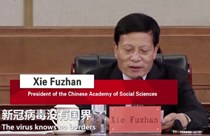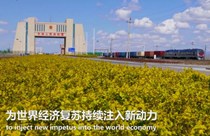The clear future direction of Sino-European cooperation
Author : Source : Economic Daily 2014-03-10
The “China-Europe 2020 Strategic Agenda for Cooperation” has provided a practical blueprint for the development of China-Europe cooperation. What both sides now need to do is to understand how to implement the plan and convert the cooperative potential into real benefit.
Since the China-Europe Comprehensive Strategic Partnership was established ten years ago, the interdependence between both sides has been promoted, with cooperation in various fields continuously extended and deepened. China and the EU recently jointly released the “China-Europe 2020 Strategic Agenda for Cooperation”, which determines various fields of cooperation for both sides, and proposes nearly 100 cooperation initiatives and the mechanisms for their implementation, providing a practical blueprint for the development of China-Europe cooperation in the next 5 to 10 years.
In the fields of peace and security, China and Europe will jointly face regional and global challenges. The two sides have pledged to promote multilateral cooperation and attach importance to multilateral organizations and platforms, including UN and G20. The EU has explicitly proposed China as the host for the next “G20 Summit”. The agenda has also mapped out certain rules, including China and Europe holding regular dialogue on defense and security, gradually increasing the level of dialogue and cooperation, carrying out joint anti-piracy drills and holding special discussions on anti-terrorism when appropriate. China is the largest developing country in the world while the EU is the largest union of developed countries. Enhancing cooperation in the fields of peace and security between the two sides will help the international configuration develop in the direction of more inclusiveness, and is significant for safeguarding global peace and security.
In the field of the economy, China and Europe have formally declared the launching of an investment agreement negotiation. This will be another high-level agreement between China and the major world economies, following the Sino-US investment agreement negotiation. The agreement will help further release the cooperative potential of Sino-Europe bidirectional investment and provide a simple and secure legal environment, as well as powerful safeguards, for Chinese enterprises’ investment in Europe. In the field of finance, China will promote cooperation with European investment banks and discuss cooperation with the European Bank for Reconstruction and Development. Meanwhile, China will give play to Sino-European exchange arrangements for a bilateral domestic currency, enhancing the international development of the RMB.
This year the money involved in the Sino-European trade dispute over photovoltaic products has reached 20.4 billion dollars. Called by some the biggest trade friction in history, it has drawn worldwide attention and even raised conjecture that there may be a trade war between China and Europe. In a bid to avoid such an incident occurring again, the agenda proposes that China and Europe give priority to channels of dialogue and consultation to address major bilateral trade frictions. The two sides have pledged at the same time that they will prevent the abuse of trade remedy measures and jointly make just, reasonable and effective rules in key fields including international trade and investment, finance, environment, climate change, the internet and the new generation of wireless communication techniques. All these measures will be conducive to enhancing the healthy and stable development of Sino-Europe trade and the investment relationship.
Sustainable development, urbanization and technological innovation will be major fields of pragmatic Sino-European cooperation. The EU can boast of globally leading levels of urbanization, while China is going to launch the most large scale process of urbanization in the world. For both sides, strengthening cooperation in this field and sharing advanced technology and managerial experience are conducive to promoting Sino-European cooperation. Technological innovation will determine future development. In order to promote their own international competitiveness, both sides will deepen industrial study, research and cooperation, establish cooperation in industrial clusters and intensify exchange and cooperation in fields like new energy, nuclear technology, space and spaceflights, especially regarding their respective global satellite navigation systems and manned space flights.
When it comes to people-to–people exchange, both sides will step up exchange between students and academics and support youth exchange visits, encourage the study of their respective languages, and make it more convenient for Chinese citizens to travel in Europe.
At a deeper level, the “China-Europe 2020 Strategic Agenda for Cooperation” should be viewed as an important component of China’s overall strategy of reform and opening up in this new period. The whole project highly conforms to the strategic deployment on comprehensively deepening reform and opening up mapped out at the third plenary session of the 18th CPC Central committee in terms of time arrangements, agenda setting and field expansion. It is an important document which will serve China’s medium-term development in the future.
The future direction of Sino-European cooperation is now clear. China and Europe are expected to work hand in hand to push forward cooperation in various fields, taking the Sino-European comprehensive strategic partnership to a new level.
The author is a researcher with the Institute of World Economics and Politics at the Chinese Academy of Social Sciences.
The Chinese version appeared in Economic Daily, November, 29, 2013.
Translated by Yu Hui
Revised by Gabriele Corsetti
Ye Shengtao made Chinese fairy tales from a wilderness
Ye Shengtao (1894–1988) created the first collection of fairy tales in the history of Chinese children’s literature...
-
How northern ethnicities integrated into Chinese nation
2023-09-18
-
Mogao caves
2023-09-12
-
Mogao Grottoes as ‘a place of pilgrimage’
2023-09-12
-
Time-honored architectural traditions in China
2023-08-29
-
Disentangling the civilizational evolution of China
2023-08-28
-
AI ethics in science fiction
2023-08-23














 2011-2013 by www.cssn.cn. All Rights Reserved
2011-2013 by www.cssn.cn. All Rights Reserved